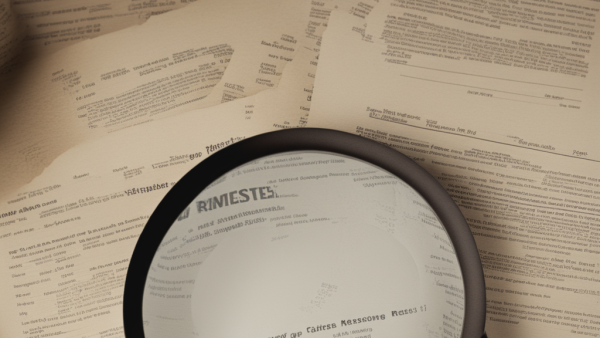
Last updated: October 06, 2022
Retention rates within the world of Software as a Service (SaaS) are one of the most vital metrics a business can track. Although what this metric defines can vary from industry to industry, within the world of SaaS, it is commonly thought of as the number of customers that return to a company again and again. This could mean that a customer is subscribed for six months instead of only one month, or even a longer period of time.
SaaS businesses rely on retention rate, which dictates how many customers actively subscribe to the product. Based on research conducted by McKinsey, 92% of SaaS companies that grow less than 20% each year will fail. This considered, establishing methods of retaining customers is vital, as the continual impact of their recurring subscriptions will help to sustain and grow your SaaS business.
In this article, we'll discuss everything you should know about SaaS customer retention rates, documenting how to calculate this metric, exactly what it details, methods of improving customer retention rates, and other metrics you should be tracking. Let's get right into it.
Table of contents
- What is retention rate?
- What does the user retention rate indicate?
- Why user retention rate matters
- What types of retention rates are relevant for SaaS?
- How to calculate retention rate
- The Customer Retention Rate formula
- The MRR Retention Rate formula
- How to optimise customer retention rates
- Other key customer retention metrics to track
- Key takeaways
What is retention rate?
Retention rate encompasses two core ideas - subscribers to a SaaS product and the progression of time. When discussing your customer retention rate, you'll need to determine how many customers continually subscribe to your product over any given period. Typically, this means you'll check the total number of existing customers at one point, then check these numbers again in a fixed period of time (3-, 6-, 9-, or 12- months).
A company's customer retention rate is expressed in a percentage, demonstrating the total number of customers that remained paying subscribers during this period. One common mistake that people make is not checking the same customers when calculating retention rates. For example, if you begin with 100 customers in January, lose 30 of those customers by June, but gain 60 new customers in that period, you haven't actually ended up with a 130% retention rate.
On the contrary, the retention rate should focus on existing customers, with your retention rate in the above example being 70%. In order to calculate customer retention rate, you should always focus on the number of customers that change over this period, focusing on both customer acquisition and how many old customers have cancelled their subscriptions.
What does the user retention rate indicate?
When calculating a user retention rate, a business is attempting to understand the general loyalty of its customer base. With SaaS products, which typically bill on a monthly period, this is a measure of whether your customers deem your product useful enough during that month to then be worthy of spending another instalment on the next month.
While customer retention focuses directly on the number of customers you're able to keep for a period of time, it also indicates the number of customers who value your product enough to continue to pay for it. A very low retention rate could signify that your customers are dissatisfied, meaning you should attempt to refine your offering.
Why user retention rate matters
Customer retention rates are vital in any business. After all, there are a limited number of people that could try out your product, meaning that you should endeavour to keep as many of those customers as possible if you're looking to succeed. A low retention rate means that you'll always be searching for new customers, implying a higher marketing budget and more money spent on acquiring new leads.
The famous statistic in the world of SaaS is that customer acquisition costs 5x more than customer retention, with the latter being the focus of more successful businesses. Alongside this, an increase in 5% of customer retention can lead to an increase in profit ranging anywhere from 25-95%, demonstrating the importance of this metric when it comes to the profit of your business.
Quite simply, a business that routinely works on customer acquisition while also having high customer satisfaction and retaining those customers will see more profit, a high customer retention rate, and a higher likelihood of success.
What types of retention rates are relevant for SaaS?
While customer retention and MRR retention are frequently thrown into the same boat, they are actually two different forms of retention calculations, each with a different set of criteria and usages. To help you get to grips with the differences, we've outlined the simple definitions of each.
It's good to calculate both of the following, each of which will give your business a slightly different set of information:
Customer Retention Rate
MRR Retention Rate
Let’s break these down.
Customer retention rate
Within the world of SaaS, customer and user retention rates are actually the same thing. As your users are paying to utilise your platform, they are customers, making these two interchangeable. That said, this is the metric that reveals the number of customers that continue to pay over a given period of time.
When people generally talk about retention rates, this is most likely what they'll be directly referring to.
MRR retention rate
MRR retention rate directly refers to the amount of revenue that your company is generating each month. Along with the number of customers, this will demonstrate the amount of impact that customers who are leaving are having on your business. If certain clients are paying more or have a higher tier of service, then they'd be more impactful on your revenue.
This calculation discovers how much revenue you're retaining each month, considering any customers that you're losing and the value each represents.
How to calculate retention rate
As each customer retention rate figure focuses on a different element, you will need to know different figures to plug into each calculation. While each calculation is similar, they're not all the same, so here is a cheat sheet to help you.
Let's break down exactly what each of these calculations requires.
The Customer Retention Rate formula
If you want to calculate retention rate for customers, the first thing you'll need to decide upon is what period of time you're going to be calculating for. You could run this calculation at any interval, but larger periods of quarters of a year or more are also useful. Equally, you could focus on month-to-month changes if you're currently implementing frequent changes you want to track.
Retention rates can change drastically when the platform you offer undergoes significant changes. With this considered, if you're undergoing major changes, then a shorter period of time would be better when tracking your customer retention rate.
To calculate customer retention, you should:
Find out how many existing customers there are at the start of the period. (S)
Find out how many of these customers still exist at the end of the period. (E)
Determine the total number of new customers within this time period. (N).
From there, you'll run the following calculation: [(E-N)/S] x 100 = CRR.
With this, your customer retention rate will be expressed in a percentage.
The MRR Retention Rate formula
When calculating the MRR (Monthly Recurring Revenue) retention rate, you'll need to know a few things:
The total number of renewed subscriptions
The total possible number of subscriptions that could have been reviewed
The cost of each different subscription
To calculate this:
The MRR retention rate = MRR of subscriptions that were renewed / total MRR of subscriptions up for renewal.
That means that if you have $10,000 of MRR at the start of January, and one customer that contributes $1,000 a month stops their subscription, you'll be doing:
9,000 / 10,000 = 90%
Therefore, your MRR retention rate is currently at 90%. Much like when calculating retention rate, you should always express the final figure from the rate formula as a percentage.
Avoid these mistakes when calculating retention rates
When calculating customer retention, there are several mistakes that business owners continually make that cause their final statistics to not accurately represent their retention rate. Due to an error with the calculation or the initial numbers, there could be an array of errors that lead to incorrect retention rates.
Typically, there are four main issues when it comes to user retention rate measures:
Not calculating user retention rate alongside MRR retention
Counting your cancelled memberships as churn
Not calculating retention at different stages of a customer's lifetime
Not calculating different retention rates for customers on different plans
Let's break these down further.
Not calculating user retention rate alongside MRR retention
While your customer retention rate will give you a great deal of information, it's not as effective when considered in complete isolation. Another core factor that you should take into account is the MRR retention rate. With these two factors combined, you'll have a much more complete picture of the current direction of your SaaS business.
Let's use an example to demonstrate why tracking both of these metrics is important. A business just released a new feature that is only available to the highest tier of their SaaS customers. The business offers two tiers, one at $10 a month and one at $25 a month. There are currently ten customers on the first tier and ten on the second tier.
After the release of this new feature, two customers on tier one cancel their subscription. While the retention rate would now look like 90%, the MRR has not decreased by 10% as well. The two that left the company's subscription plan were only spending $10 a month, leading to a total revenue of $20 less than before.
With this considered, although some people have left, the MRR retention rate has only decreased by $20 out of a possible $35, which is not much to worry about. While a falling retention rate may be alarming, when put into perspective with the MRR customer retention rate, much more insight is gained that will help a business to make smarter decisions.
Counting your cancelled memberships as churn
When running a SaaS business, customer loyalty and catering to each and every existing customer are important aspects of running your company. However, when onboarding new clients, it's very common within this industry to offer a free trial.
If you're only looking at cancelled memberships when calculating your churn rate, then those that signed up for the free trial and then cancelled would look like cancelled memberships. Yet, those people never actually paid anything to your company - so can you really count them as customers?
SaaS businesses have a complex relationship with user churn and churn rate, meaning you need to focus on actual customers lost, not just cancelled memberships. Take the time to dig into your memberships and see exactly where you're losing customers.
Not calculating retention at different stages of customers' lifetimes
Clients at different stages within their journey have different values. This is due to something known as customer lifetime value (LTV). This metric demonstrates how much any given customer has given to your company during their entire history with you.
A customer paying a monthly subscription for three years will have generated significantly more than someone who has only been paying for a few months. With this in mind, customers are more valuable at different moments in their journey. Customers will likely quit your service early in their journey rather than later.
The importance of churn rate depends on where the customer is in their lifecycle. At the beginning of their customer journey, there is often a much higher churn rate. This is much less of a worrying factor, as earlier customers are more likely to stop using a platform. If your long-term customers suddenly stop using your platform, then you should be worried. You should always consider customers' churn in relation to how long they've been using your service.
Taking this approach will give you a much more representational understanding of your churn rate, which will allow you to take steps to reduce it.
Not calculating different retention rates for customers on different plans
As suggested by the inclusion of MRR retention rates, not all customers are equal within your systems. If you're only looking at customer retention as a whole, then you're not getting the entire story. It's much more valuable for your business to look at retention rates directly tied to certain tiers you offer.
When calculating customer retention rate, you should always do so based on specific tiers of your business, treating each offering like a different service entirely with different retention metrics and statistics. This will also help you gain insight into which of your plans are most favoured by your audience and which package tends to have a high retention rate.
How to optimise customer retention rates
After you've calculated your total retention using the retention rate formula, you're then tasked with optimising your business to improve it. To start improving retention rates, you need to ensure that fewer customers leave and more customers start sticking with your product for as long as possible.
There are a few core methods that you should focus on when trying to improve the percentage of your active users that stick with your SaaS platform or service. Each of these aims to improve the number of loyal customers, helping to boost retention and lower your churn rate.
When attempting to keep your customer base happy and decrease churned customers, stick to the following tactics:
Monitor advertising expectations - One of the leading causes of a high churn rate is promising way too much in your advertisements. When a new customer signs up to your platform and then is disappointed with the reality of your product, you're leading yourself into a corner from which the only result will be a high churn rate.
Overdeliver, if possible - Within SaaS products, overdelivering is about including useful tools or systems that weren't even mentioned in your advertising. By making these obvious to find for your customers, you'll be able to improve how useful your service is, making customers want to come back for more.
Encourage loyalty - By working out a customer lifetime value, you can reward those that have been with you for a long time. By offering discounts or rewards to customers that stick with you for a long time, you'll be able to encourage loyalty and increase your retention and revenue effectively.
Stay personal - Customers are drawn to a personal service that directly accommodates them. From email campaigns to social media interactions, you should make any communication you have with your customers as personal as possible. If your customer sees your brand as a team of humans rather than just a computer system, they're much more likely to stay with you for the long run.
Show your value - What does your business do successfully? Do you save people time? Help them save money? Focus on what you do well and make sure your customers see that front and centre. Whatever you offer your customers, make sure they know exactly what they're getting and how they benefit from it. Focusing on your own success is a key part of demonstrating how useful you are and thus satisfying your customers.
Although these are only a few potential options that you could turn to when trying to reduce the number of churned customers you encounter, they are very good options to start with. Over time, when you continually calculate your retention, you'll be able to increase the value of your product in the eyes of your customers and create a more successful SaaS business.
Benchmarks – What is a good retention rate for SaaS?
SaaS businesses typically have extremely good retention metrics as their whole business is set up to include an element of retaining customers. With this in mind, above 90% is typically a good SaaS retention rate to aim for. While up to around 97% is the higher end of the spectrum, this crucial metric is likely to rise and fall fairly consistently.
If you're focusing on churn, you’d see an average user churn of between 3-10% each month.
Other key customer retention metrics to track
Alongside retention, there are many important metrics that you should focus on when creating a successful SaaS business. Typically, these are available through data-driven tracking, with your own business generating all of the numbers if you know how to collect them.
Let's quickly move through four key metrics:
Revenue churn - This is the percentage of money generated by subscriptions that is lost due to current customers leaving your business. This metric of how many people stopped paying and how much it costs you is tracked over a given period of time.
Net promoter score - Net promoter score is a customer experience metric you can find by asking questions to your audience. This will give you a rough idea of your total customer loyalty among active users, helping you to understand how much people enjoy your product.
Repeat purchase rate - Repeat purchase rate is the percentage of your customers returning for another purchase after their first purchase. In terms of SaaS, this refers to those that get past the first month's payment.
Customer lifetime value - As discussed earlier, this is the total amount a customer has paid to your company over their entire lifetime.
Key takeaways
Retention and churned customers are two factors that will always come into the day-to-day operations of SaaS companies. No matter what offering you provide within this industry, SaaS is innately connected with a recurring billing structure.
Quite simply, the ability to increase your retention metrics means that your business won't always have to keep searching for new customers and spending as much on marketing. While the onboarding process is important when laying the foundation for customer loyalty, continually offering fantastic service throughout the calendar year should always be your goal.
By focusing on this important metric, you'll be able to understand your own company on a deeper level, helping you to refine your offering and provide the very best experience for your customers on a continual basis.
Written by

Sam founded his first startup back in 2010 and has since been building startups in the Content Marketing, SEO, eCommerce and SaaS verticals. Sam is a generalist with deep knowledge of lead generation and scaling acquisition and sales.


